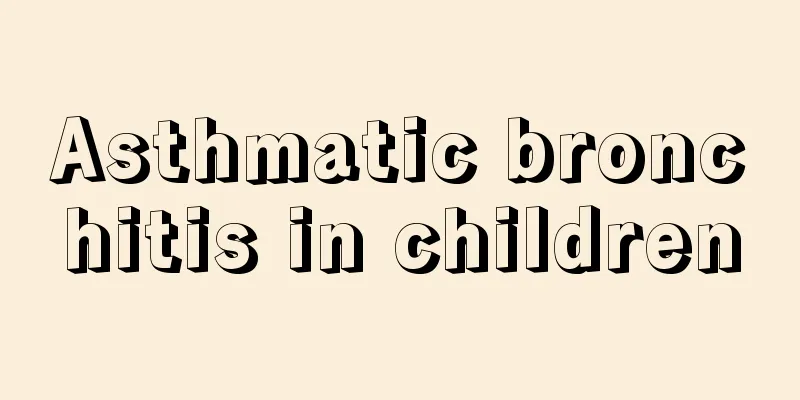Causes of nosebleeds in children in spring

|
Many parents have found that children in their families are particularly prone to nosebleeds in the spring. This is because the temperature difference between morning and evening is relatively large in spring, which causes greater stimulation to the nasal cavity. If children like to pick their noses with their hands, the capillaries in the nasal cavity will become particularly fragile, often causing the capillaries in the nasal cavity to rupture, resulting in nosebleeds. Spring climate causes Reason: In spring, the temperature difference between morning and evening is large, sometimes hot and sometimes cold. In order to adapt to the changes in external temperature, the capillaries in the nose expand and contract. Since the capillaries in children's noses are already delicate, they have difficulty adapting to such changes, which may also cause the capillaries in the nose to rupture and cause bleeding. Suggestion: The temperature rises rapidly in spring and the weather becomes dry, so some children are prone to getting nosebleeds due to getting angry. Therefore, parents should not let their children eat too much chocolate, cookies, pistachios and other foods that are easy to cause heat in spring. When a child's nose itches, you can gently apply nasal drops inside the nasal cavity, but do not pick it. At the same time, pay attention to keeping the indoor air moist and let your children eat more vegetables, fruits and other foods rich in vitamins. Spring disease infection causes Reason: The incidence of certain diseases is also higher in spring, such as the common cold, allergic rhinitis, Japanese encephalitis, etc. Disease factors cause children to have colds and fevers, which can cause congestion in the nasal cavity, and the capillaries may rupture due to high expansion, which can also cause nose bleeding. Recommendation: When a child has a nosebleed, don't panic. Try applying a small ice pack or a cool towel to the forehead, root of the nose and both sides of the neck. You can also use your fingers to press the arteries on both sides of the nose to minimize the amount of nosebleed. Then go to the hospital as soon as possible to find out the cause and treat it symptomatically. At the same time, be careful to tell the child not to tilt his head back to prevent swallowing blood, which will irritate the stomach and cause vomiting. How to stop nosebleed in children 1. Raise your hand to stop bleeding If the left nostril is bleeding, raise your right upper limb; if the right nostril is bleeding, raise your left upper limb; if both nostrils are bleeding, raise both hands, and then put them down after a while after the bleeding stops. 2. Blowing air into the ears The doctor takes a quick breath, then puts his lips toward the patient's ear canal and blows air into the ear slowly and forcefully, taking care not to leak any air while blowing. 3. Warm feet soak That is, soak the patient's feet in warm water, which will generally stop the bleeding quickly. 4. Stick garlic on the soles of your feet Take three cloves of raw garlic and mash them into a paste. Then spread it on a cloth and apply it to the soles of your feet, which is equivalent to the Yongquan acupoint. Note that if the right nose is bleeding, apply it to the right foot, and if the left nose is bleeding, apply it to the left foot. If both sides are bleeding, apply it to both feet. Notice: Within a few days after the nosebleed stops, the patient should try not to eat spicy or irritating food to avoid inducing bleeding; pay attention to strengthening physical exercise to enhance physical fitness; also be careful not to catch cold to prevent colds and respiratory infections that may cause bleeding after coughing or sneezing; actively treat the primary disease, such as high blood pressure, blood disease, nasal tumors, etc.; do not blow your nose with great force, especially avoid the bad habit of picking your nose with your hands. |
<<: What to do if your child has nosebleeds in autumn
>>: What to do if a boy often has nosebleeds
Recommend
Nursing methods for seven-month-old premature babies
We all know that the normal pregnancy period for ...
What should I do if my child has blue veins on his head?
Children are the most important members of every ...
How to treat poor gastrointestinal absorption in babies?
Poor gastrointestinal absorption will reduce the ...
Can children drink pigeon soup?
Children's bodies are in the development stag...
Newborn baby crying for no reason
Newborns cannot express their thoughts or physica...
Why does a 4-year-old cry at night?
A 4-year-old child is in a hazy state about the w...
What to do if your child is short? These measures are effective
Many parents find that their children are not tal...
What to do if your 2-year-old baby has tonsil suppuration
A 2-year-old baby has tonsillitis? This sounds li...
Causes of vaginal adhesions in babies
When children are young, they will be stuffed wit...
How to deal with baby's sweat herpes
The baby's physical resistance is not as stro...
Premature baby jaundice has not subsided after 50 days
Jaundice is more common in premature babies than ...
Methods of dietary supplements for anemia in babies
It is a very troublesome thing for a baby to have...
What should children eat to nourish their brains?
Every parent hopes that their child is smart, esp...
What are the symptoms of mercury poisoning in babies?
Babies are very active and curious about many thi...
What should I do if my child's bottom is red?
If your baby often has a red butt, it is because ...









